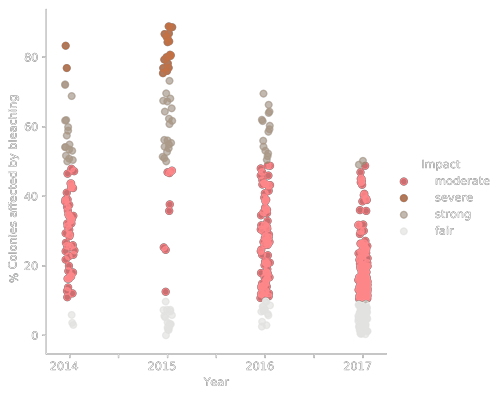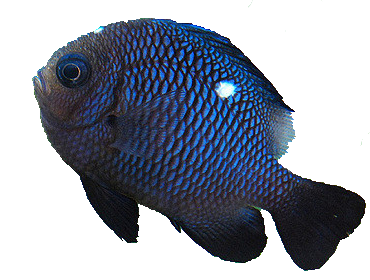Marine Micro Plastic: effect of sedimentary micro plastic particles on marine meiofauna
Plastic particles have been found in all accessible marine ecosystems, from polar ice to the deep sea. While a large portion of observable marine plastic appears to originate in the fishing industry, disposable plastics like food wrappers, disposable cups, bottles, and other single-use commodities are a major concern for wildlife and important ecosystem processes. While plastic pollution has become somewhat of a poster child of marine conservation, information on how small plastic particles are affecting services and processes in our environment is still in it’s infancy. Studies on the impact of marine mega fauna are highly worrying, and despite impressive clean-up and reduction initiatives the yearly plastic production and the following pollution is still increasing.
Aim
This study is aiming to answer the following key questions:
- How much micro plastic is present in different ecological zones of Koh Phangan’s reefs?
- Is the amount correlated to observable macro plastic particles on beaches, reefs, and water column?
- What is the effect on organisms living in the sand-gap system of the sediment (meiofauna)?
- Can we identify sources, and recommend strategies for reduction?
Methods
To observe differences in micro plastic concentrations in distinct zones, sediment will bee collected along grids and transects in various bays along Koh Phangan’s coasts. Baby will babe sorted according to expected plastic load, based of fresh water flow, current- and wind directions, and human prince (fishing, recreation). Micro plastic will be extracted using the portable Sediment-Microplastic-Isolation-Unit as described by Coppock et al., with a non-noxious salt based floatation media.
READ MORE (Proposal in preparation)
(Image after Coppock et al., 2017)
Long term development of benthic community
The world’s coral reefs are currently undergoing massive changes due to man made climate climate change, pollution, overfishing, and a plethora of other factors. The effects on a global scale have been severe and saddening, but local systems show different responses – sometimes even within the same bay. On first sight, Koh Phangan’s main local pressures appear to be of touristic nature: sedimentation and runoff due to urbanization, mechanical damage from recreational water activities, and debris from fishing for the local market. Local management could, in theory, increase resistance to global changes and protect Koh Phangan’s coral reefs for generations to come.
Aim
This study is aiming to answer the following key questions:
- How did Koh Phangan’s coral reef community (the benthos) change with the ongoing environmental challenges?
- Can we identify winners and losers in a changing ecosystem?
- Can we identify key local pressures?
- Can we predict changes in the ecosystem, based on climate models??
- Can we recommend further measures to protect KPN’s coral reef?
Methods
To create timelines of benthic community changes, 8 years of data will be analyzed and complemented with additional datasets for coral biodiversity, benthic cover, and community structures. A python based ecological model is envisioned to predict community changes under persistent pressures, based on current climate models.
READ MORE (Proposal in preparation)
Long term development of fish community
Koh Phangan’s reef fish community has been undergoing visible changes over the past decade. Multiple stressors influence the distribution of reef fish: fishing, predator structure, coral reef health, recreational use, and noise; to name just a few. Fish are not just a important source of protein for coastal populations, they also provide a multitude of services for the ecosystem. Healthy herbivore numbers reduce algae growth on the substrate, a healthy corallivore community keeps the coral healthy and diverse.
Aim
This study is aiming to answer the following key questions:
- How did Koh Phangan’s reef fish community change from 2011 until today?
- Can we identify winners and losers in a changing ecosystem?
- How will potential species shifts influence the ecosystem?
- Can we identify threats, and recommend strategies for reduction?
Methods
To observe community changes over time, data from 2011 until 2019 will be analyzed. Additional abundance and biodiversity data will be collected with Underwater Visual Censi, belt transects, and video observations.
READ MORE (Proposal in preparation)
Coral metagenomics/ eDNA pilot study
Environmental DNA (eDNA) is DNA sampled from the environment, instead of the organisms themselves. As organisms constantly expel DNA by interacting with their environment (like feces, gametes, and mucus), high-throughput sequencing (metagenomics) can be used to measure the biodiversity of a system, by analyzing soil, snow, air, or seawater.
Aim
This study is aiming to create baselines for metagenomic studies in the Gulf of Thailand. The resulting library could bee used to identify the complete coral biodiversity of an area from a few sea water samples.
Methods
To create baselines, the biodiversity (species diversity) of Koh Phangan’s coral reefs need to be catalogued through photographic censi and identification. Watersamples will be analyzed, metabarcoded and sequenced in Europe.
READ MORE (Proposal in preparation)
Genetic variation of Porites lutea in the Samui archipelago (part II)
Coral reefs are under immense pressure from climate change and other, local, pressures. In Thai coral reefs P. lutea is a common and important reef builder and essential for the ecosystem’s structure and function. The genetic information derived from this project will be usedto infer the survival capacity and recovery potential of these valuable ecosystems.
Aim
This study is aiming to answer the following key questions:
- How genetically diverse is Porites lutea in the Samui Archipelago?
- Can we infer the survival capacity of P. lutea dominated systems?
- Can we make assumptions about the connectivity of reefs in the Gulf
Methods
Genomic DNA of the coral tissue samples will be extracted using DNAzol® and polyacrylamide carrier. The tissue samples will be amplified at ten different coral specific microsatellite loci. Microsatellites are up-to-date molecular markers for population genetic analyses. Due to their high mutation rate (neutral markers) and overall high level of variability they are optimally suited to evaluate the genetic basis of populations (genotypic variability, heterozygosity) and detect geographic genetic patterns e.g. reef connectivity and dispersal routes.
READ MORE (Proposal in preparation)
Pomacentridae recruitment and their role in filamentous algae turf control in coral reefs in the Gulf of Thailand
Background
Coral reef ecosystems are currently under threat at unprecedented levels from frequently raised sea surface temperatures, elevated nutrient levels, and unsustainable fishing practices. To predict and mitigate negative effects on environment and coastal populations, the understanding of internal processes in coral reefs are key, but south east Asian ecosystems are notoriously understudied, in comparison to Caribbean or Australian areas. Algae, the main competitor of Scleractinia for space and light, has already replaced coral as the dominating organism in many reef ecosystems. Algae cover is primarily controlled by nutrient and light availability, P:N ratios, and herbivory (Vermej et al, 2010). South East Asian reefs are generally characterized by high filamentous algae turf-, and lower macro algae-cover (src), contrasting their counterparts in the aforementioned locations. Coastal reefs in the Gulf of Thailand, which are considered eutrophied from untreated effluent and agricultural run-off (Cheevaporn et al, 2003), are additionally portrayed as high in Damsel Fish (Pomacentridae) abundance, and low in ‘classical’ browsers like Unicorn Fish (Naso spp., Acanthuridae) (Puk et al, unpublished).While macro algae control, and even phase-shift removals by macro-algae browsers and –grazers are well described (Graham et al, 2013; Idjadi et al, 2003), our understanding turf algae croppers in the Indo-Pacific, and the role of territorial Pomacentridae in algae cover control remains limited..
Aim
For this study, we propose a simple set of manipulation experiments to increase our knowledge of how territorial Pomacentridae are recruited to fresh substrate, and their influence and control of turf algae cover.
Research Questions:
- How fast do damsel fish accept and defend new territories?
- What influence does the absence/ presence of DF have on algal turf?
- What influence does the absence of roving herbivores have on DF behavior and algal turf efficacy?
Methods
Triplicates of 4 different plot designs will be place and fastened directly on the sand in relatively sheltered positions in Damselfish territory at 3-4m depth. Each plot is stacked with 12 tiles, one of which will be removed monthly to measure algae dry weight, scraped from the tiles. The tiles are attached to 4kg cinder blocks, which act as anchors for each plot.
- Plot A: open design, allows access from all organisms in the reef.
- Plot B: fully caged design, allows access for organisms smaller than 5mm (i.e. crustaceans). This equates full herbivory exclusion.
- Plot C: medium mesh plot design, allows access for fish smaller than 4 cm, which equates access for Damsel Fish and neonates only.
- Plot D: caging control plot design, to correct experiment for light and hydrodynamic effects







